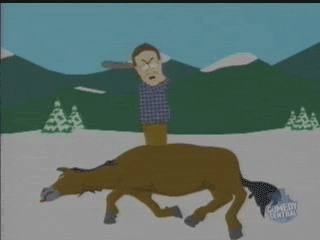fta0303
Well-Known Member
What's required to kill an animal depends greatly on the condition of the animal. A wounded, angry grizzly may take a lot more than one quietly resting. Certainly it depends on the size of the animal. There are great variations in size within a species, so a single criterion for a species must assume the largest. Energy is a poor indicator in itself: there is a great difference in killing effectiveness between a high velocity bullet that blows up on impact w/o penetrating and one of equal kinetic energy that does penetrate. What part of the bullet's energy is dumped inside the animal matters and where it is dumped matters also. If the bullet penetrates completely, then not all of its energy is dumped in the animal. The bullet's penetration depends on what it strikes in the animal. The reaction of the bullet to impact and penetration is presumably a big factor. And some say so is its velocity. Many factors affect the outcome. Small wonder that we seek a simple guideline. But I doubt that a simple guideline suffices. Unfortunately, you must know or learn what you are doing at a little higher level of detail. An energy cutoff by itself doesn't cut it.
Nathan Foster at Terminal Ballistics Research (https://www.ballisticstudies.com/) has much to say that seems sensible. He bases his conclusions on observed effect in the field. What comes out to this layman is that you need to know your rifle, your cartridge, your bullet and the effect of target distance and strike point. A premium bullet may not yield a premium effect if a strike point appropriate to the target distance is not selected. Nathan's experienced-based comments on the performance of various bullets in a given cartridge at various ranges are invaluable. There are a handful of important factors and you as a hunter must understand them. Homework is better than an energy cutoff value.
Nathan Foster at Terminal Ballistics Research (https://www.ballisticstudies.com/) has much to say that seems sensible. He bases his conclusions on observed effect in the field. What comes out to this layman is that you need to know your rifle, your cartridge, your bullet and the effect of target distance and strike point. A premium bullet may not yield a premium effect if a strike point appropriate to the target distance is not selected. Nathan's experienced-based comments on the performance of various bullets in a given cartridge at various ranges are invaluable. There are a handful of important factors and you as a hunter must understand them. Homework is better than an energy cutoff value.

